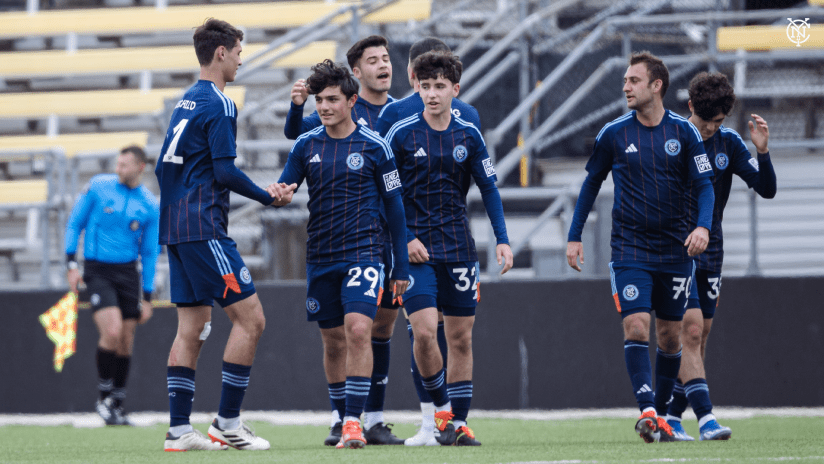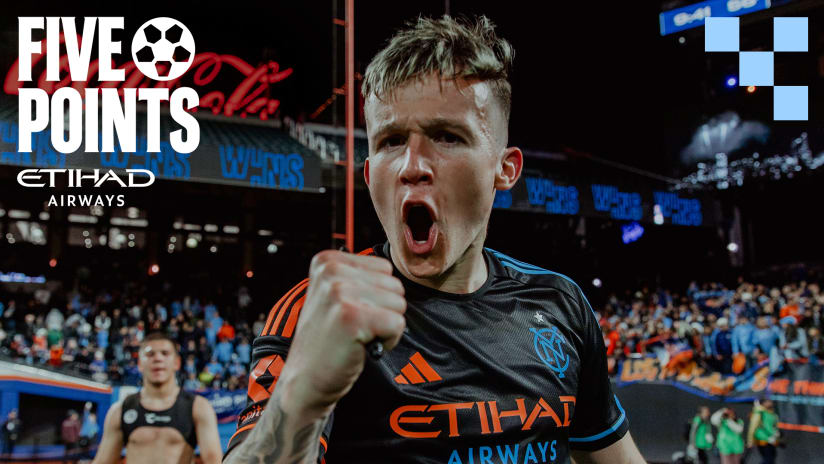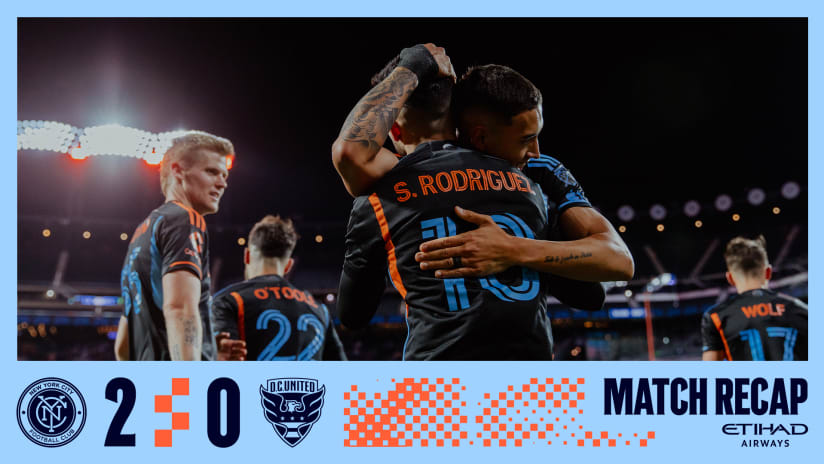“What is it with men and their balls?”
Neuroscientist John Krakauer’s first question directed towards Patrick Vieira may not have been as cerebral or highbrow as the ones that followed but it set the tone for a light-hearted yet fascinating conversation at the Rubin Museum between two leaders in their respective fields.
Staged as part of the museum’s Brainwave series of events and talks, “Keeping Your Eye on the Ball” promised to examine whether an athlete’s focus on the field can translate to everyday life.
Covering a myriad of subjects, such as the complexity of soccer, the complacency of winning teams, as well as a debate on the existence of talent, this 90-minute audience with Krakaeur and Vieira left all attending with plenty to mull over for years to come.
For those who couldn’t be in attendance, may we present five of the most arresting topics from the event to give you a flavor of what you missed…
1. The Skywalker Model
Perhaps the most intriguing talking point from the event originated from Krakauer’s studies into British gold medal winners from the Olympics.
His findings were captivating as he felt he struck open a model which has played out countless times, both in sport and in fiction.
Krakauer found that one common difference between British athletes who went to the Olympics and won gold medals, compared with those that had competed but failed to win, was the presence of a significant psychological trauma early in winners’ lives and then the emergence of a mentor figure soon after.
This also rings true with comic book heroes, such as Batman, Spiderman or even Luke Skywalker from the Star Wars series – no coincidence, according to Krakaeur.
Upon hearing this model, Vieira agreed that it was a story he had seen play out a thousand times before with teammates, with players in his charge and even in his own life when he left Senegal at the age of eight to start a new life in France, leaving behind family and friends.
Is this down to an increased resilience brought about by adversity early in life? A motivational modulator leading to a willingness to work that bit harder to wring the sponge of talent from an aspiring soccer player? How does this influence sporting recruitment decisions with regards to selecting Player A or Player B and is this decision explicit or intrinsic within someone who recognizes the potential impact of psychological challenge, having experienced it himself?
A compelling area for discussion.
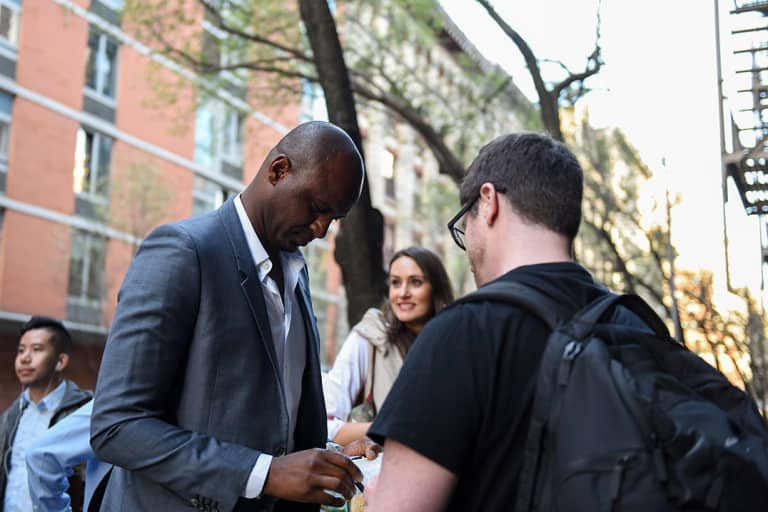
2. Does Talent Exist?
In another interesting learning from the afore-mentioned research on British gold medal winners, Krakaeur also found that “winners” were motivated to defeat themselves, or their past records, than the opposition.
For Patrick, soccer was an escape from the pressures of life, a means to provide a better life for himself and for his family, a chance to take him to places that he never dreamed of going as a child in Senegal.
Vieira doesn’t believe he was blessed with more than a small talent for soccer but he hoped that by dedicating himself to practice, he could reach the highest echelons of the game.
But does talent even exist? Krakaeur and Vieira found themselves at odds on the subject.
For Patrick, there is no better argument for the existence of talent than in comparing the generally-accepted two best players on the planet: Lionel Messi and Cristiano Ronaldo.
In Messi, Vieira believes you have the embodiment of someone who was blessed with natural talent, who may not be the best player in training but doesn’t need to work anywhere near as hard as his counterpart, Ronaldo, who Patrick feels has maximized every possible chance he had to be the best, working harder than everyone else day-in, day-out.
Dr Ericsson’s famed 10,000 hour rule would also lend weight to this mindset.
Krakauer cited Michael Jordan as someone who described what he called a peerless “cognitive map” of the basketball court, meaning he could anticipate the other nine players’ movements on the court better than anyone else, seconds before they were made.
But does more practice as well as better hand-eye coordination or motor functions all help to create this so-called “talent”? Is talent just a shortcut word for countless internal and external factors, from attributes given to us which are pre-defined such as genes and lung capacity, to more tangential, environmental indicators, like access to good quality practice space or even the trauma-mentor model mentioned earlier?
Are we biased towards the mysticism and magic of the word, “talent”? Again, one for those long nights of the soul…
3. Complacency of Winners
Probably the greatest sporting story of the last 12 months, it’s no surprise that Leicester City’s rise from relegation-battlers to Premier League title winners got more than a couple of mentions on the night.
Their subsequent drop-off leading to the dismissal of Claudio Ranieri earlier in the year led to an avenue of conversation on the complacency of winners and why champions struggle to retain titles.
Patrick referenced both his club and international playing careers when tackling this issue and shed light on just how difficult it can be to retain the requisite focus to “go again” once you’ve achieved your ultimate objectives.
With France, Patrick was part of teams which conquered the world and Europe in 1998 and 2000 and then went on to the 2002 World Cup possessing in their squad the leading marksmen in England (Thierry Henry), France (Djibril Cisse) and Italy (David Trezeguet), yet scored no goals at the tournament and were eliminated in the group stages.
At Arsenal, despite possessing one of the greatest teams the Premier League has ever seen, Vieira’s side couldn’t win back-to-back titles, but why? Who was to blame? The players or the coach?
Both, in Patrick’s eyes. He hinted that in 2002, France arrived in the Far East believing that they were the best and couldn’t be beaten and this allowed an “arrogance” to bleed into their mental approach.
“I know, I’m French… arrogance is what we’re good at” he quipped.
How to arrest this? Vieira believes that a coach’s role is to set the emotional tone and to be the one to shake things up when traces of this begin to stir in the group, even though the players cannot be spared their share of the blame.
To surmise, it’s complicated and if anyone had figured this out already, Leicester may well be winning the league again this year!
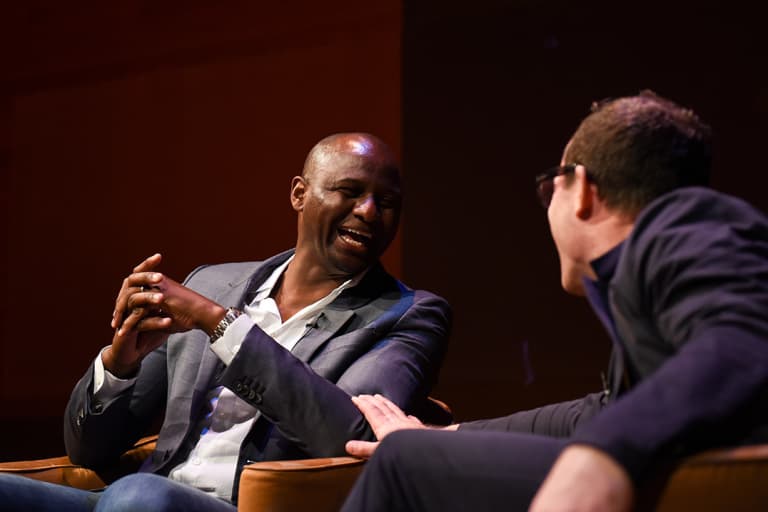
4. Patrick Can Dance
In the audience Q&A session which followed the main body of Krakaeur and Vieira’s ruminations on sporting prowess, the leader of a dance school asked a question no NYCFC.com report has ever put to the Head Coach in hundreds of interviews… can he dance?
Once the laughter in the theater died down, Patrick smiled and said, “I think I can dance, yes… I can dance.”
Cue more laughter.
There was a serious point to the subsequent question, however, as Patrick went on to pick through whether a parent should encourage their child to specialize in soccer with a view to a career in the game or allow them to try multiple sports.
Patrick put forward the case that there is something to be taken from all sports which could be fed into a successful soccer career and said that he felt pushy parents enforcing strict one-sport regimes could be detrimental in the long run and damage relationships between the activity and the participant.
Krakaeur then pointed out that Roger Federer only committed to tennis at the age of 14 and before then had experimented with soccer and other sports and, well, it didn’t turn out too badly for him, did it? Consider us sold.
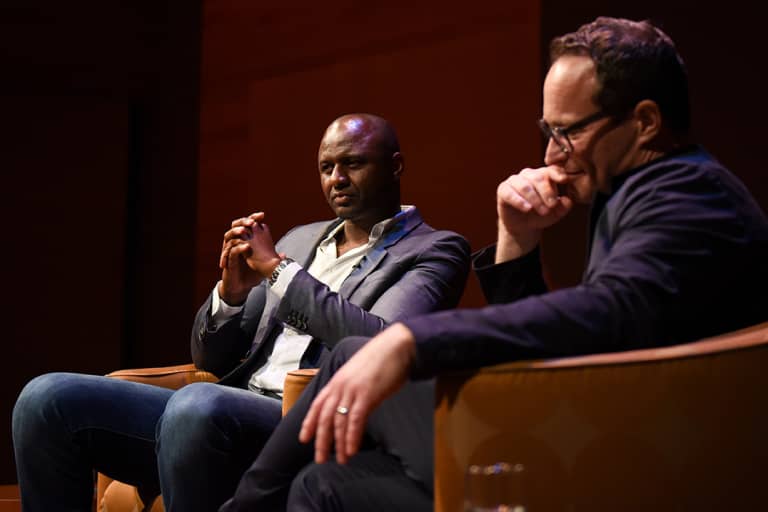
5. What is it, then?
So what is it with men and their balls? Or better, why is soccer so popular around the world with men, women and children alike? Why do 1 billion people tune in to watch the World Cup final every four years? Why our fascination with 22 men moving a sphere from one end of a field to another and back again?
Krakauer believes it’s the complexity of the game and the near-endless variables which keep us coming back year after year and he believes that the variation in the cognitive fields tested on an individual basis by the sport mean that there should be little or no separation between geniuses in math and science to the geniuses in the game of soccer. Or chess.
Look out for a video on NYCFC.com of the best bits from this excellent event soon and learn more about upcoming talks at the Rubin Museum of Art here.



